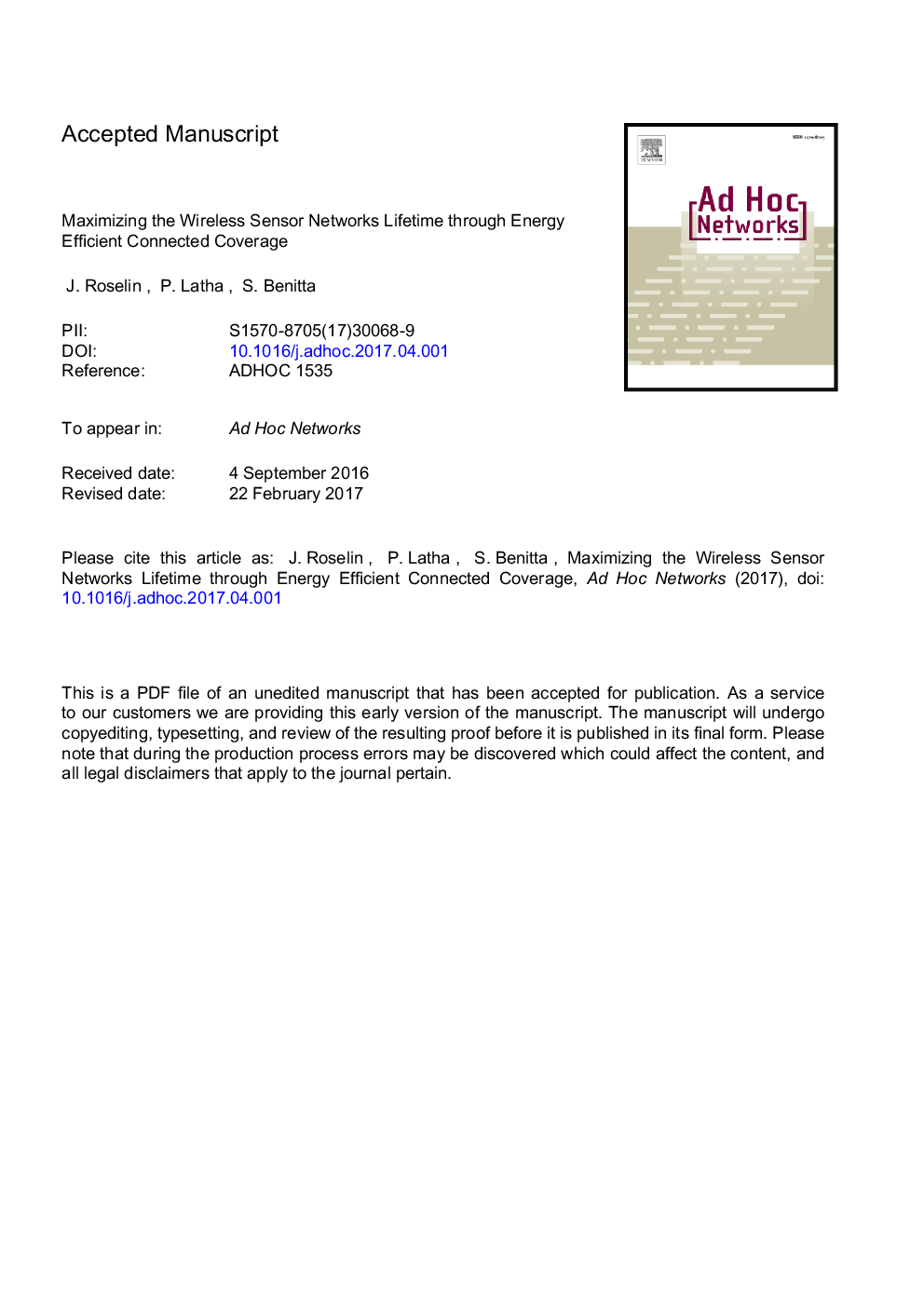| Article ID | Journal | Published Year | Pages | File Type |
|---|---|---|---|---|
| 4953550 | Ad Hoc Networks | 2017 | 18 Pages |
Abstract
Wireless Sensor Network (WSN) is an emerging technology that is gaining much importance owing to its immense contribution in various day-to-day applications. A sensor is battery-operated, unattended low-cost device with limited computing, communication and storage capabilities. Thus the network lifetime has become the key characteristic for evaluating sensor networks in an application-specific way. There are certain approaches in literature which consider the lifetime maximization problem. However, they suffer from impulsive energy hole, coverage hole and communication hole. In this paper we propose a novel Energy Efficient Connected Coverage (EECC) scheduling to maximize the lifetime of the WSN. The EECC adheres to Quality of Service (QoS) metrics such as remaining energy, coverage and connectivity. In EECC the sensor which doesn't contribute to coverage will act as a relay node to reduce the burden of the sensing node. The sensing node senses the target whereas the relaying node communicates the sensory information to the sink. The EECC forms non-disjoint cover sets using remaining energy, coverage and connectivity of every sensor. The proposed EECC outperforms similar scheduling algorithms found in the literature in an energy efficient way with the short execution time. Through simulations the constancy of EECC in extending the lifetime of WSN is confirmed.
Related Topics
Physical Sciences and Engineering
Computer Science
Computer Networks and Communications
Authors
J. Roselin, P. Latha, S. Benitta,
